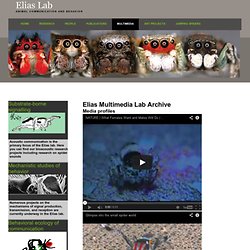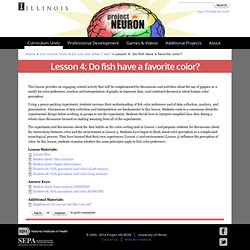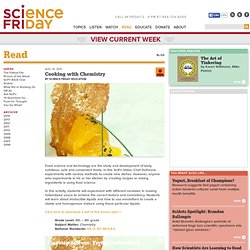

The Concord Consortium. Concord.org Log in to concord.org to build and manage your own custom collection of resources, rate and comment on resources and manage your subscription to our newsletter.

Log in If you do not have a concord.org account, register now. It's free. Hands-on Activities for Teaching Biology to High School or Middle School Students. By Drs.

Ingrid Waldron and Jennifer Doherty, University of Pennsylvania The expression "hands-on, minds-on" summarizes the philosophy we have incorporated in these activities - namely, that students will learn best if they are actively engaged and if their activities are closely linked to understanding important biological concepts. Some of our activities are explicitly aligned with the Next Generation Science Standards, as indicated by (NGSS) in the descriptions below and the links to the right. Additional information is provided in Summary Tables and in the Teacher Preparation Notes for these activities.
In the months to come we will publish additional activities that are aligned with the Next Generation Science Standards. To accommodate limited budgets, most of our activities can be carried out with minimum equipment and expense for supplies. Additional resources for teaching biology are available at More Minds on Activities for Teaching Biology. Introduction to Biology Moldy Jell-O. Elias Lab Multimedia Archive. Media profiles Scientific American Frontiers Profile (article, video) M. volans H. dossenus H. dossenus audio H. klauserii H. cognatus H. cognatus audio H. pugillis (Atascosa Mountains)

Connecting… Lesson 4: Do fish have a favorite color? This lesson provides an engaging central activity that will be complemented by discussions and activities about the use of guppies as a model for color preference, creation and interpretation of graphs to represent data, and continued discussion about human color perception.

Using a penny-pecking experiment, students increase their understanding of fish color preference and of data collection, analysis, and presentation. Discussions of data collection and interpretation are fundamental to this lesson. Students come to a consensus about the experimental design before working in groups to run the experiment. University of Illinois. Standard Deviation and Variance. Deviation just means how far from the normal Standard Deviation The Standard Deviation is a measure of how spread out numbers are.

Its symbol is σ (the greek letter sigma) The formula is easy: it is the square root of the Variance. So now you ask, "What is the Variance? " Variance The Variance is defined as: The average of the squared differences from the Mean. To calculate the variance follow these steps: Work out the Mean (the simple average of the numbers)Then for each number: subtract the Mean and square the result (the squared difference).Then work out the average of those squared differences.
Example You and your friends have just measured the heights of your dogs (in millimeters): The heights (at the shoulders) are: 600mm, 470mm, 170mm, 430mm and 300mm. Find out the Mean, the Variance, and the Standard Deviation. Your first step is to find the Mean: Answer: Mean = 600 + 470 + 170 + 430 + 3005 = 19705 = 394 so the mean (average) height is 394 mm.
So the Variance is 21,704 Formulas Oh No! NPR Science: Ants That Count! Cooking with Chemistry. Food science and technology are the study and development of tasty, nutritious, safe and convenient foods.

In this SciFri Video, Chef Dufresne experiments with various methods to create new dishes. However, anyone who experiments in his or her kitchen by creating recipes or mixing ingredients is using food science. In this activity, students will experiment with different variables in making hollandaise sauce to achieve the correct texture and consistency. Students will learn about immiscible liquids and how to use emulsifiers to create a stable and homogenous mixture using these particular liquids. Grade Level: 6th – 8th gradeSubject Matter: ChemistryNational Standards:NS. 5- 8.1, NS.5-8.2 Stovetop Science: Frying Hollandaise Chef Wylie Dufresne, the owner of New York City restaurant wd~50, experiments with food, literally. Activity Materials Vocabulary Homogeneous: Having a uniform composition or structure. What To Do Activity 1 Activity 2 What’s Happening? Topics For Science Class Discussion.